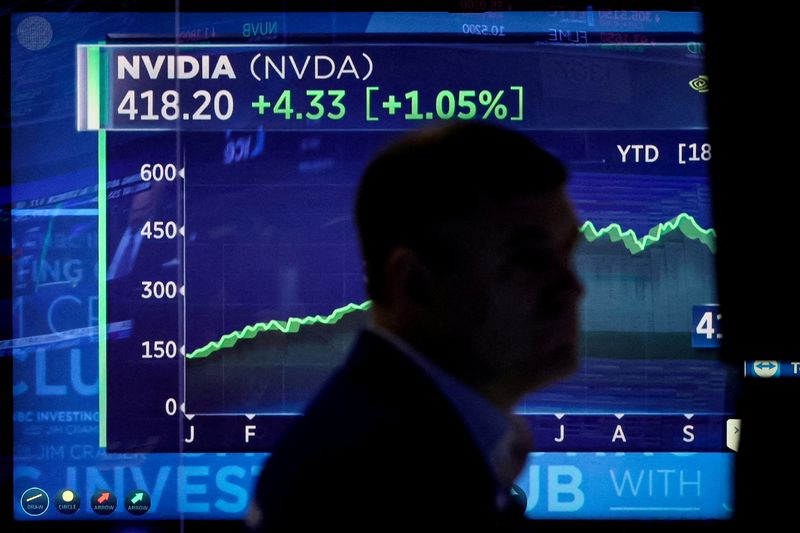Alongside its latest earnings results, Nvidia (NASDAQ:NVDA) announced a 10:1 stock split and a 150% dividend raise following the market closed on Wednesday.
Nvidia shares, now the ninth most expensive in the S&P 500, opened above $1,000 a day after the print. A 10:1 split would imply a $100/share price, all else being equal, after trading opens on Monday, June 10th.
This year, eight companies announced stock splits, including Walmart (NYSE:WMT) in January and Chipotle (NYSE:CMG) in March. The surge in Big Tech share prices prompted four splits among the ‘Magnificent 7’ mega-cap stocks since 2022, with Google (NASDAQ:GOOGL), Amazon (NASDAQ:AMZN), and Tesla (NASDAQ:TSLA) making shares more accessible. Apple (NASDAQ:AAPL) split in 2020, while Microsoft (NASDAQ:MSFT) and Meta (NASDAQ:META) are nearing the $500/share threshold.
“S&P 500 stocks with share prices over $500 represent $7.4tn in market cap, or about 16% of the index,” Bank of America analysts said in a Thursday note.
In their recently updated research, BofA found that stock splits are typically bullish for companies that enact them. On average, returns one year post-split are 25%, compared to around 12% for the broader market.
“Splits seem to be bullish across market regimes, something management teams might consider if shares look too expensive for buybacks,” analysts wrote.
When comparing the distribution of stock split returns relative to the S&P 500, it can be seen that a few strong companies often improve average performance. For instance, Copart (NASDAQ:CPRT) gained 56% in the 12 months following its October 2022 split announcement, while Palo Alto Networks (NASDAQ:PANW) rose 39% after declaring its split in August 2022, BofA highlighted.
Given that gains are more common and typically larger than losses, stock splits appear to introduce upside potential into markets. For example, AMD (NASDAQ:AMD) and Valero experienced strong performance after their split announcements, regardless of their prior trading behavior.
However, outperformance is not guaranteed, BofA’s team cautions. Roughly 30% of stocks see negative returns 12 months post-split, with an average decline of 22%. While splits may indicate strong momentum, companies can still struggle in a challenging macro environment.
“Companies like Amazon, Google, Tesla, and Dexcom (NASDAQ:DXCM) struggled in the 12 months after splits were announced in 2022 as interest rates spiked. Amazon is a good example of how stocks can recover, however, and was up 26% in the 24 months after its split announcement,” the firm noted.
Current NVDA shareholders will receive 10 shares for every share they own today, while the market capitalization of the AI giant will remain unchanged.
